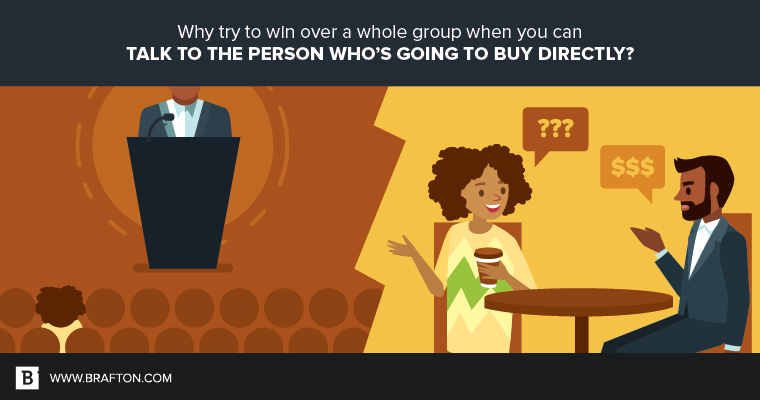Living and working so closely to Silicon Valley means I’m constantly hearing about and trying the latest and greatest technologies – and all the newest buzzwords. In content marketing, specifically, it seems like there is one acronym that’s on everyone’s mind these days: ABM.
Short for account-based marketing, ABM is the latest craze in the B2B marketing space. Like seemingly everything else, I’m sure it’ll be sweeping the nation in short order if it hasn’t already (I freely admit I’m in a bit of a bubble here in the Bay Area).
But just because ABM is trendy, does that mean it’s right for you and your business?
What is ABM exactly?
Essentially, in ABM, sales and marketing teams only talk to a select number of firms. Typically, targeted accounts have a need for your offering and are willing to pay a premium price. The idea here is that if you only speak to certain companies that require what you’re selling, you can better focus your efforts and see stronger results from them.
The 80:20 rule is at play here. If 80 percent of your sales come from 20 percent of your clients, why bother talking to everyone else? This approach can be especially appealing for B2B firms that have long sales cycles and a more premium product. There’s little point in trying to target a large number of businesses, especially when so few even need what they have to offer.
For example, say your brand sells amphibious helicopters (those designed to land on water). As you can imagine, not many people are in the market for this mode of transportation. Your business, under an ABM strategy, would only want to talk to CEOs, monarchs, wildly successful entrepreneurs and select others that conceivably could be in the market for such a thing. Why talk to everyone if a very select group is in the market for what you sell?

How does ABM differ from both traditional and digital marketing?
Under ABM, you have much more targeted conversations. Every interaction with someone is highly specific, catered to specific needs and where that individual is in their own buyer journey.
Some businesses may be doing ABM already, but aren’t using the fancy acronym. We sometimes like to call it „sales enablement marketing“ here in our San Francisco office.
In many ways, ABM is a new way to define an old approach to selling. Think about what it was probably like to go shopping in a small town 100 years ago. The person who owned the dry goods store knew you well and likely knew exactly what you tended to purchase. The store clerk might offer you special deals on the items you repeatedly bought, or would show off new products that he or she thought you might also enjoy. ABM seeks to bring this level of personalization to 21st century marketing and selling.
Let’s go back to the amphibious helicopters for a second. If they were using a standard marketing strategy, this business might send out mass emails talking about the benefits of choppers that land on water, or post videos to their website showing off the helicopters’ capabilities.
Now, let’s say the business, as part of their new ABM strategy, thinks that a certain sports star is potentially interested in one of their helicopters. To market to this person, the company sends Tweets to the athlete talking about how easy it would be to fly by helicopter to games and emails them videos of how their choppers would let them fly right to their favorite fishing spots. If you’re that sports star, it’s easy to see how a more personalized message is far more likely to catch your attention than a mass email and generic videos.

Content marketing and ABM need to go hand in hand
In my example, only one person at a time is being targeted. Most B2B firms don’t have this luxury, as they are likely talking to dozens of different people across departments for as long as two years or more until a sale is finalized. Under ABM, each one of those stakeholders must be specifically communicated with throughout the lengthy sales cycle.
„It’s important to remember there is not one person in any large organization solely in charge of a decision,“ said Andy Walters, head of Consulting at Brafton. „Any idea, goal or work you are trying to sell to a prospective account should impact influencers and decision-makers, not just one person. Be creative, be bold and be different. Your ideology should set you apart from your competition and give your brand an opportunity to be heard at every phase in the buyer’s journey.“
That means custom emails, graphics, videos, eBooks and so much more. That means more content than you’ve ever produced.
ABM is time- and resource-intensive, as you could spend years talking to a target account before a multi-million dollar deal falls through. But, if done right, ABM can provide higher ROI than a more traditional marketing strategy.




